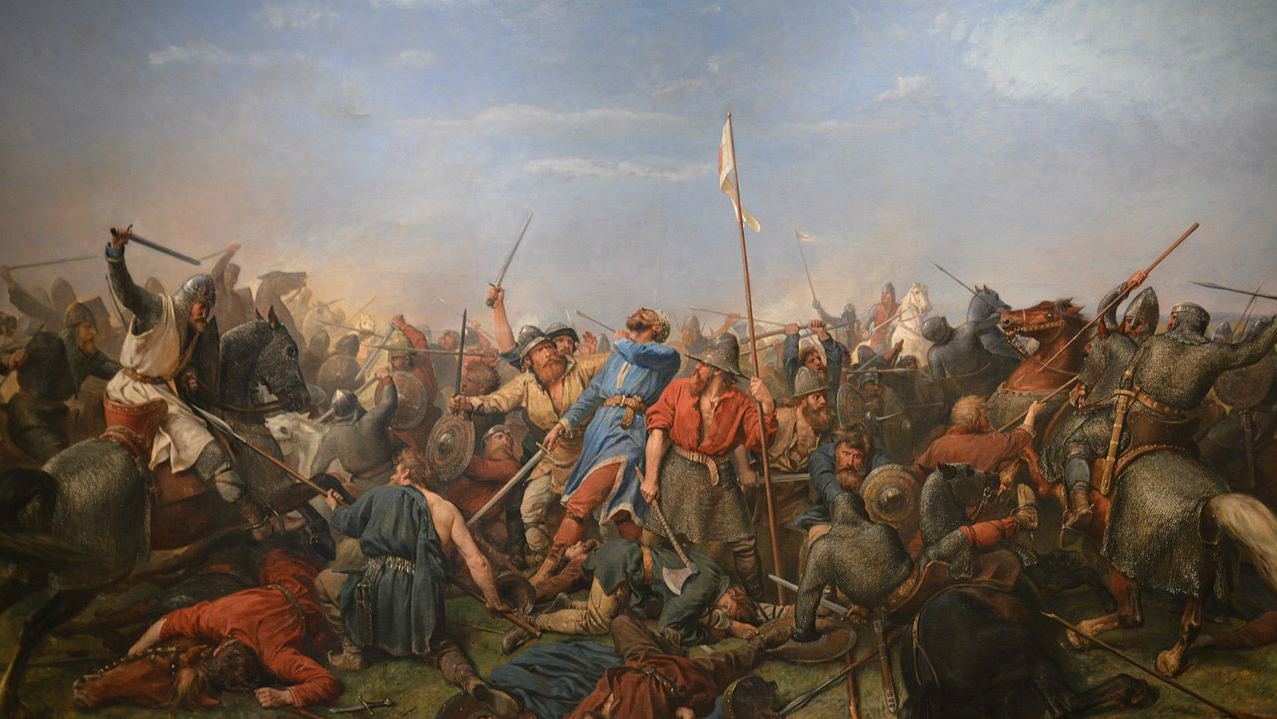What happened at the Battle of Stamford Bridge?
This week marks 952nd anniversary of bloody clash that paved way for Normans to conquer England

Most modern-day Britons believe that the Norman Conquest of England began and ended with the Battle of Hastings.
But just three weeks earlier, on 25 September 1066, the Anglo-Saxons had been engaged in a battle of arguably equal importance that would ultimately cost them victory to William the Conqueror at Hastings and - by extention - their country.
This week marks the 952nd anniversary of the Battle of Stamford Bridge, a bloody and decisive battle between English and Norwegian forces - and the first of a series of violent conflicts that would settle a three-way power struggle for the English crown following the death of Edward the Confessor.
The Week
Escape your echo chamber. Get the facts behind the news, plus analysis from multiple perspectives.

Sign up for The Week's Free Newsletters
From our morning news briefing to a weekly Good News Newsletter, get the best of The Week delivered directly to your inbox.
From our morning news briefing to a weekly Good News Newsletter, get the best of The Week delivered directly to your inbox.
So what happened at the battle in the Yorkshire village of Stamford Bridge, and why is it so important?
Power struggle
The death in January 1066 of Edward the Confessor, the Anglo-Saxon King of England, triggered a succession struggle between various forces across northern Europe.
Edward had no direct heir and there were conflicting claims about who he had chosen as his successor. His brother-in-law, Harold Godwinson, Earl of Wessex, argued that he had a stronger claim to the throne than Edward’s only surviving blood relative, his grand-nephew Edgar Atheling.
A free daily email with the biggest news stories of the day – and the best features from TheWeek.com
However, Edward had grown up in Normandy and had close ties to its people, including William of Normandy, a distant cousin who also had designs on the English crown. William insisted that he had been promised the throne by both Edward and Harold - a claim that Harold’s English supporters strongly disputed.
Harold was crowned king at Westminster on 6 January 1066, angering not only William but also another claimant to the throne: Harald Hardrada, the bloodthirsty King of Norway. The Norwegian leader’s claim was based on his descendancy from King Canute of England, a Danish prince who had led a successful invasion half a century earlier.
In September 1066, as King Harold awaited a Norman invasion from the south, Harald Hardrada, along with Harold’s exiled brother, Tostig, launched an invasion of northern England, led by a fleet of 300 Viking longships carrying around 11,000 men.
Battle
Harold wasted no time in pursuing the invading Vikings. He and his Anglo-Saxon army marched from London to York - a distance of some 185 miles - in just four days, according to history website Historic UK.
The speed of their arrival stunned the Vikings, who “only knew of King Harold’s location when they saw them rushing towards their camp”, says the BBC.
The ensuing battle was vicious and one-sided, with the ruthless English army dominating from the start. “The Norwegians were caught off guard and all those camped at Stamford Bridge were killed”, including Harald and Tostig, the BBC site continues.
Few accounts of the battle remain, but Harald is believed to have been killed by an arrow to the throat, while the details of Tostig’s death are unknown. Harald’s death in battle is considered to have marked the end of the Viking Age in Europe.
Aftermath
The English had experienced a swift and decisive victory at Stamford Bridge, but just three days later news reached King Harold that William of Normandy was commencing his invasion to take the throne.
Harold’s exhausted army were forced to march back down to the south coast of England to face the Normans. With supplies and manpower badly depleted by the clash at Stamford Bridge, the English army were crushed by the French invaders at the Battle of Hastings, on 14 October 1066. Legend has it that Harold was killed by an arrow to the eye during the fight, with his death signalling the end of Anglo-Saxon rule over England forever.
Following his victory, William raced to London, from where the Normans took power and enacted sweeping changes that would dictate the future of the country for centuries to come.
From the grand castles and cathedrals that dot the English landscape to the multiple French loanwords in the language, the effects of William the Conqueror’s rule are still apparent to this day. However, had one Norwegian military leader claimed victory at Stamford, the history of England could have been very different.
-
 7 bars with comforting cocktails and great hospitality
7 bars with comforting cocktails and great hospitalitythe week recommends Winter is a fine time for going out and drinking up
-
 7 recipes that meet you wherever you are during winter
7 recipes that meet you wherever you are during winterthe week recommends Low-key January and decadent holiday eating are all accounted for
-
 Nine best TV shows of the year
Nine best TV shows of the yearThe Week Recommends From Adolescence to Amandaland